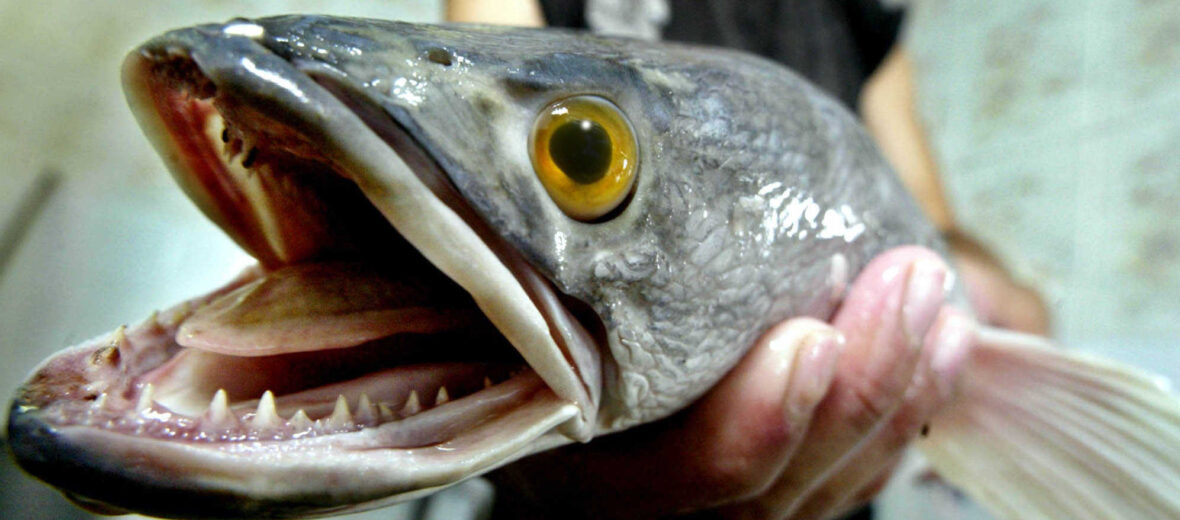
Native to parts of Africa and Asia, the snakehead is a dangerously invasive fish that has been introduced to several states in the U.S. and poses a huge problem for U.S. Fish and Wildlife Services in Hawaii, California, Florida, Massachusetts, Maine, Maryland, and Rhode Island. Due to their voracious appetite for fish, like bass, they are upsetting the natural order of local ecosystems by wiping out large populations of fish in their respective waters. Their preferred habitats are stagnant water with muddy bottoms and plenty of aquatic vegetation, as well as muddy, slow-moving streams and rivers.
First the Stats…
Scientific name: Channidae
Weight: Up to 44 lbs.
Length: Up to 4.9 feet
Lifespan: Up to 8 years
Now on to the Facts!
1.) They got their name from their long, snakelike body and the enlarged scales on their head; not to mention their sharp teeth.
2.) Their mouths have a strong, protruding lower jaw and sharp canine-style teeth.
3.) It is illegal to own this fish or have in your possession its eggs in the states of Washington, California, Texas, Alabama, Florida, and Maryland.
4.) Due to their enlarged air bladder, that acts as a primitive lung, they are able to live out of water for up to 4 days; actually breathing air!
5.) These fish are also able to move about, albeit clumsily, on land. This makes it very easy for them to migrate from waterway to waterway.
But wait, there’s more on the snakehead fish!
6.) Not only do they prey on fish, but they are also known to eat invertebrates, amphibians, and even birds!
7.) The only known predators are birds, larger fish, crocodilians, turtles, otters, and humans. But the only officially documented predators are humans, at this point.
Did you know…?
A bounty has actually been placed on their heads of up to $200!
8.) They are known to carry a disease called Epizootic Ulcerative Syndrome. This is also called mycotic granulomatosis or red spot disease and can kill fish populations en mass.
9.) Snakeheads are crepuscular (active at dawn and dusk).
10.) Adult snakeheads have been seen making grunting noises while feeding. They also make a clicking noise while coming to the surface to breathe.
But wait, there’s still more on the snakehead fish!
11.) It has been documented that they have such a strong bite that they can even bite through a person’s boot.
12.) Females can lay over 100,000 eggs a year! Up to 15,000 per clutch!
13.) It only takes around 1 – 2 days for the fry to hatch and in no time they reach a foot long and are at breeding age in 2 years or less!
Now a Short Snakehead Fish Video!
Also, check out the Critter Science YouTube channel. Videos added frequently!
Want to suggest a critter for me to write about? Let me know here.



